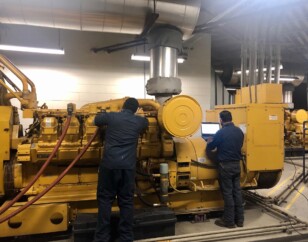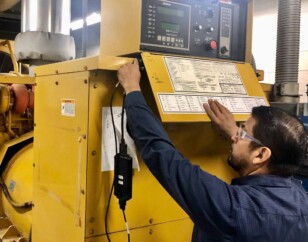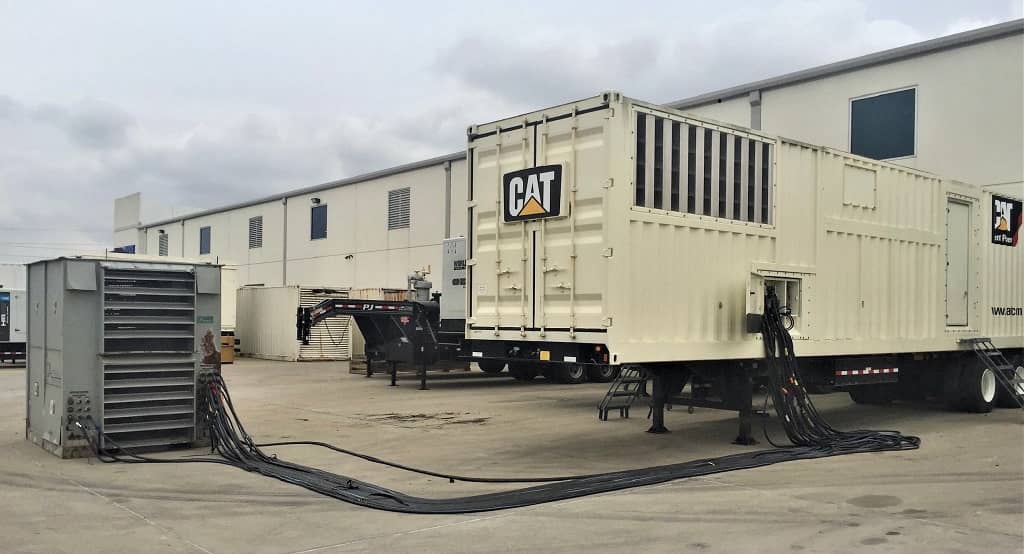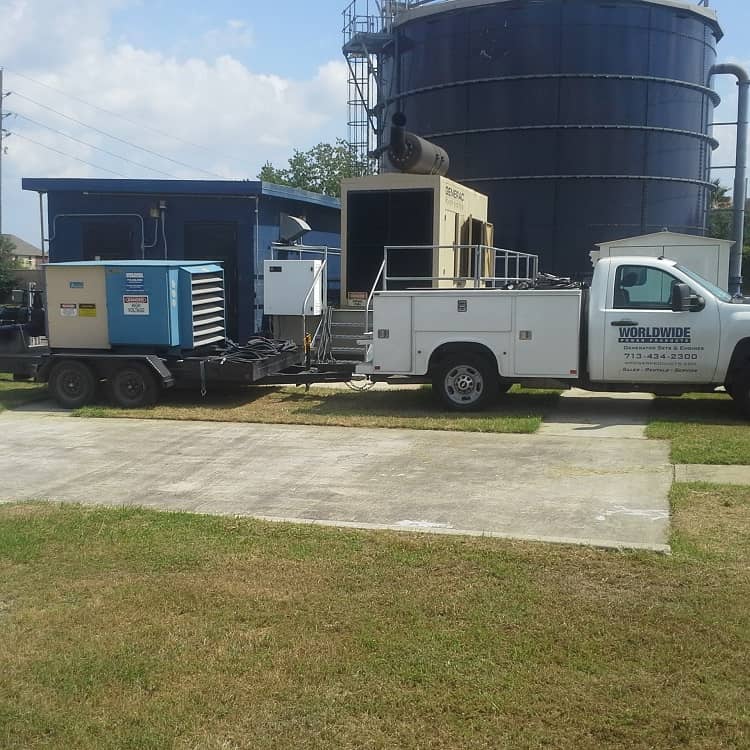MONTHLY TESTING
A monthly test is performed on Level 1 and Level 2 generators. A Level 1 generator is one whose failure could result in death or serious injury. A level 2 generator is one whose failure would not result in life-threatening injury. During testing, a generator should operate under available load for a minimum of thirty minutes. A successful test is one in which the generator:
- Achieves the minimum exhaust gas temperature for monthly testing as indicated by the owners manual, or
- Operates at normal temperature while running at no less than 30% of the nameplate Kilowatt rating.
If a generator cannot operate until its water and oil pressures have stabilized, it should be tested for less than thirty minutes to avoid prolonging its down time.
Transfer switches shall be operated monthly. (8.4.6) The monthly test of a transfer switch shall consist of electrically operating the transfer switch from the primary position to the alternate position and then a return to the primary position. Note: Although it is not required to verify the type rating of the system during the monthly test, it is required to annually confirm that the system responds within the time dictated by its rating.
EPSS circuit breakers for Level 1 system usage, including main and feed breakers between the EPS and the transfer switch load terminals, shall be exercised annually with the EPS in the “off” position. (8.4.7) Circuit breakers rated in excess of 600 volts for Level 1 system usage shall be exercised every 6 months and shall be tested under simulated overload conditions every 2 years. Note: It is not intended that the circuit breakers be exercised under load.
EPSS components shall be maintained and tested by qualified person(s). (8.4.8)
YEARLY TESTING (Sec. 8.2.4.3)
If a generator fails the monthly test, it should be operated under a load supplied by a load bank (i.e. load bank testing) for two continuous hours each year. During this two-hour period, the unit should be operated as follows:
- At 25% of the nameplate Kilowatt rating for 30 minutes.
- At 50% of the nameplate Kilowatt rating for 30 minutes.
- At 75% of the nameplate Kilowatt rating for 60 minutes.
The “exercise” supplied by load bank testing can improve a generator’s operating capacity, making it more responsive during a real power outage.
RECORDKEEPING
Records shall be created and maintained for all EPSS inspections, operational tests, exercising, repairs, and modifications. (8.5.1)
The record shall include the following: (8.5.3)
- The date of the maintenance report
- Identification of the servicing personnel
- Notation of any unsatisfactory condition and the corrective action taken, including parts replaced
- Testing of any repair in the time recommended by the manufacturer
This new section was created in the 2016 edition to consolidate record. No retention time is specified to reflect actual operating conditions. However, the retention period may be defined by the facility management or the authority having jurisdiction (AHJ) and must be made available to the AHJ on request.
MANUALS, SPECIAL TOOLS AND SPARE PARTS
At least two sets of instruction manuals for all major components of the EPSS shall be supplied by the manufacturer. These manuals should contain detailed explanations of the operations and maintenance tasks, an illustrated parts list with part numbers, and schematic diagrams of electrical wiring systems (one-line drawings), including operating and safety devices, control panels, instrumentation, and annunciators. (8.2.1)
For Level 1 systems, instruction manuals shall be kept in a secure, convenient location, one set near the equipment, and the other set in a separate location. (8.2.2)
Special tools and testing devices necessary for routine maintenance shall be available when needed. (8.2.3)
Spare parts as recommended by the manufacturer or by experience should be stocked and maintained in a secure location on the premises. (8.2.4)
It is recommended that the instruction manuals, special tools, and spare parts be stored in a metal cabinet in the generator room. The instruction manual should be stored on the inside of the cabinet door.
 America's 100 Most Promising Companies
America's 100 Most Promising Companies



